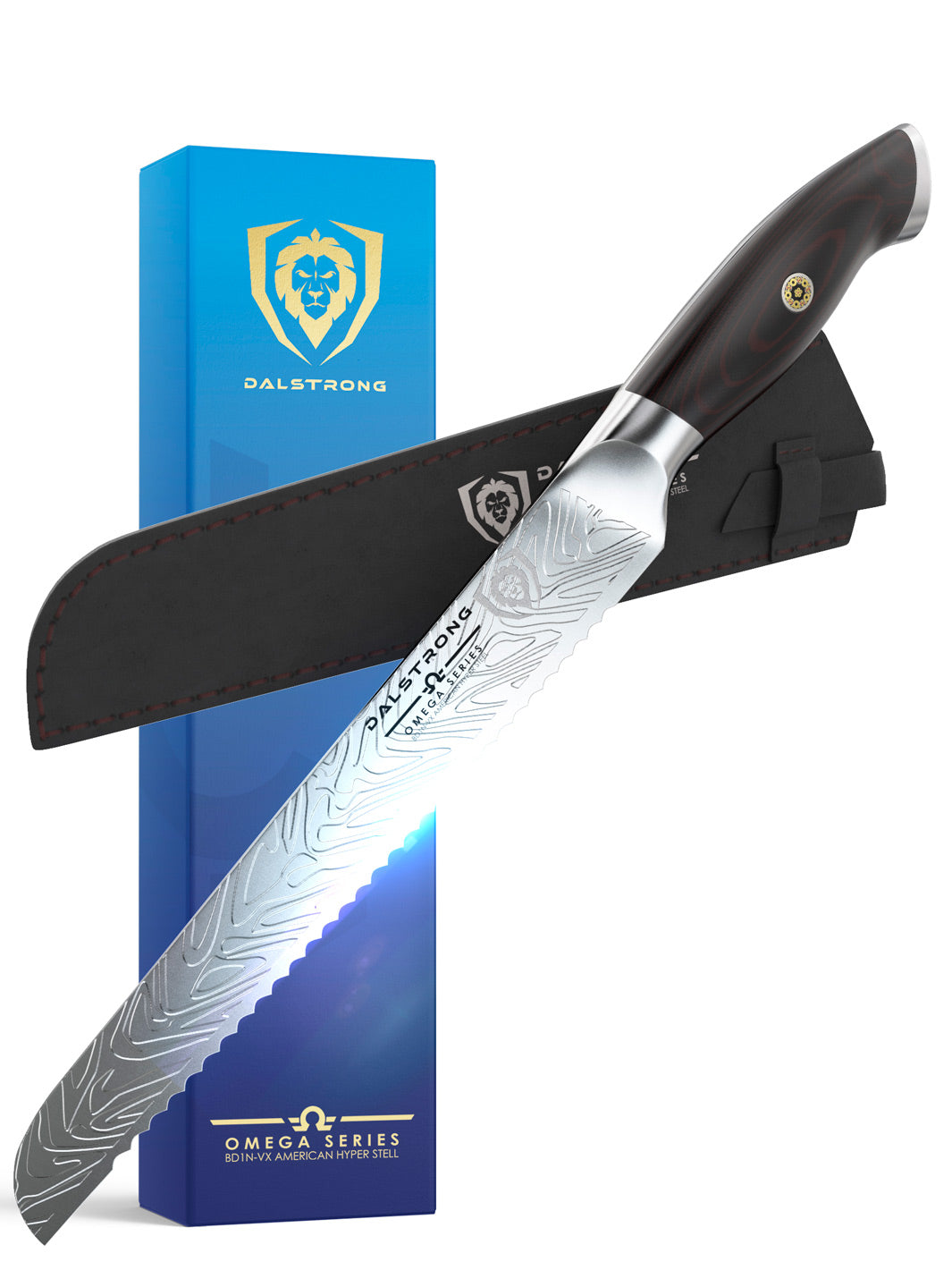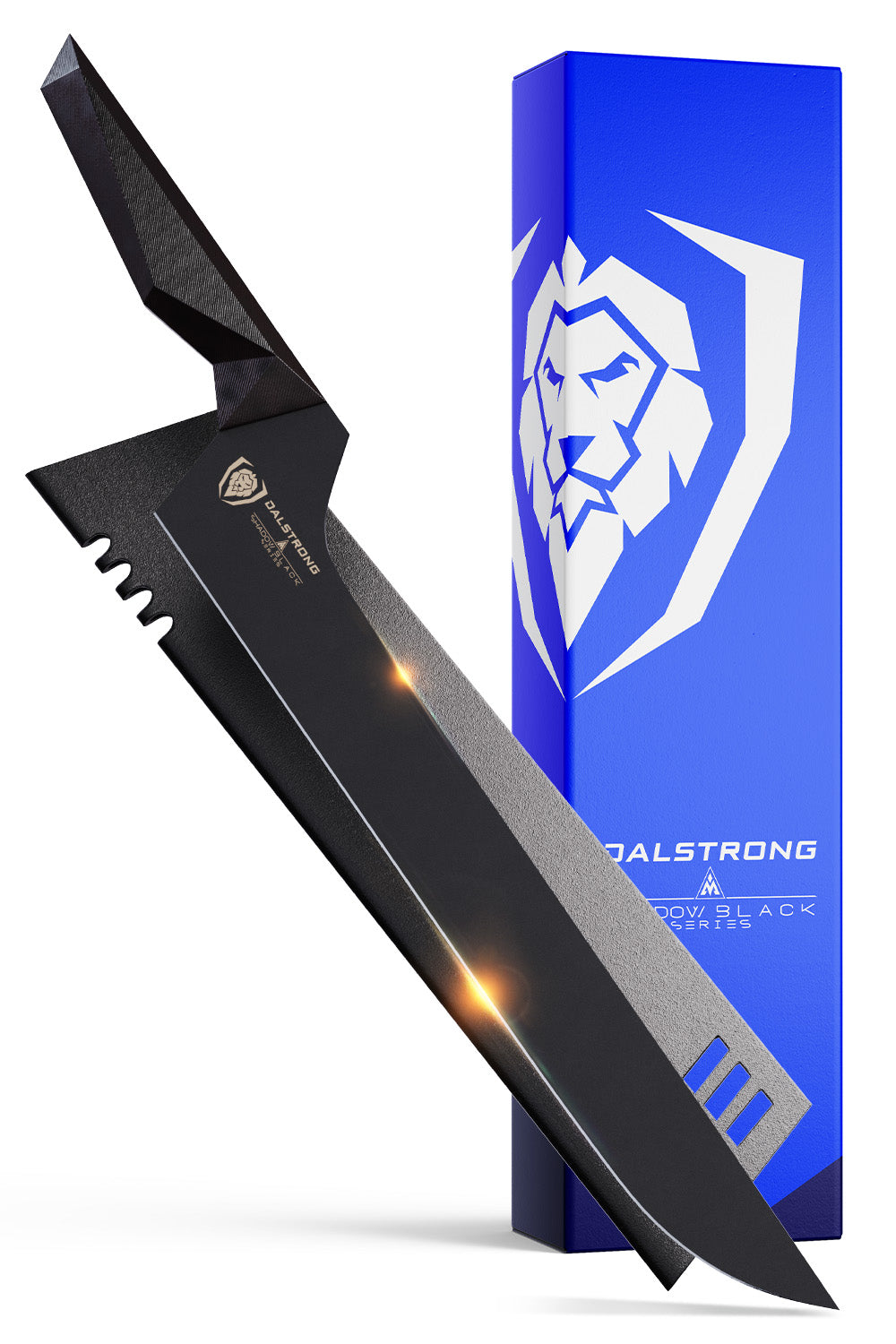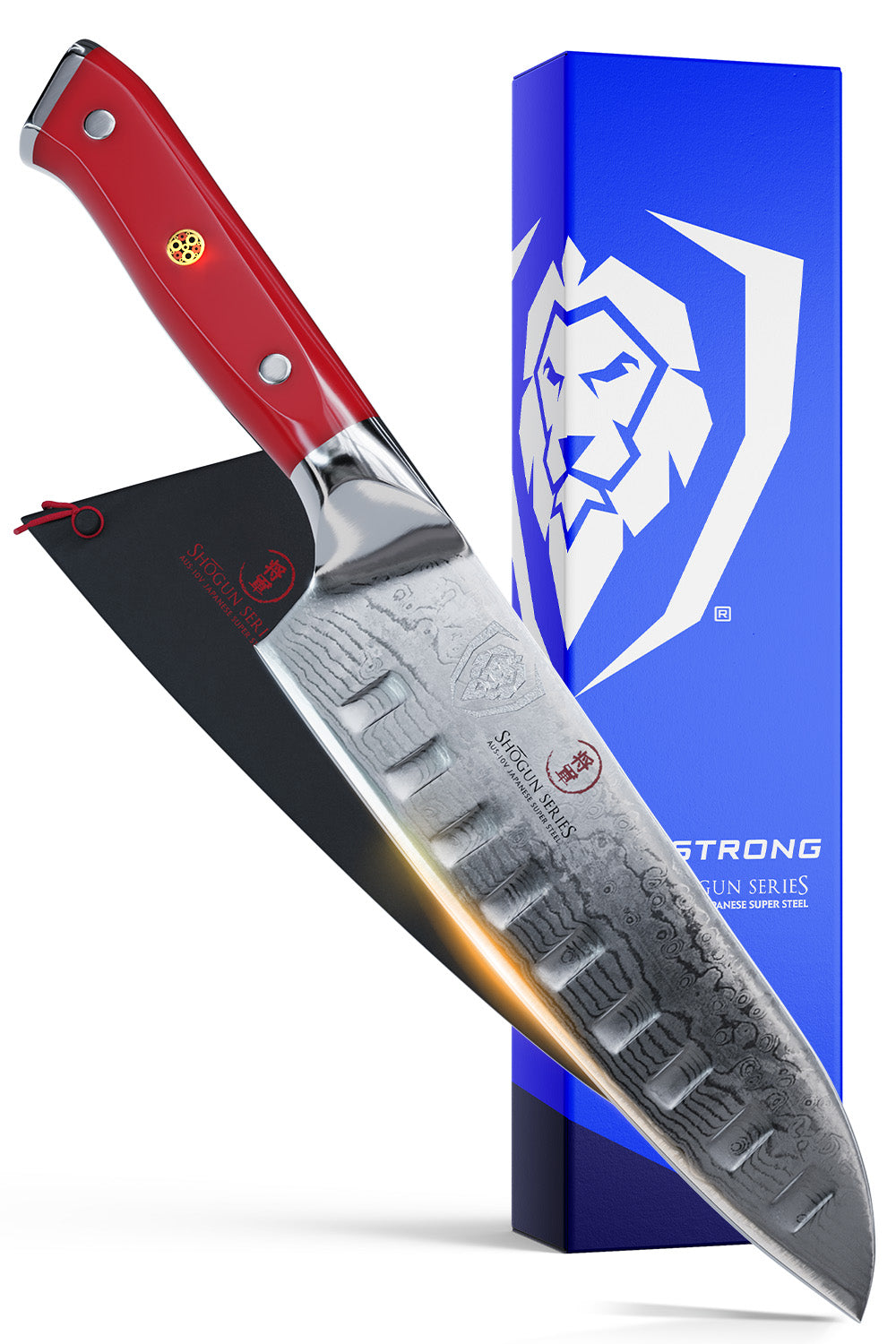 Premium Grill Kit - 4 Piece - Tongs, Spatula, Fork, Silicone Basting Brush
Premium Grill Kit - 4 Piece - Tongs, Spatula, Fork, Silicone Basting Brush
Barbecue ribs are a widely beloved staple and main dish of American cuisine, but there’s a surprising amount of disagreement about the best method of cooking as well as how long to smoke ribs. In this article we’ll talk about precise temperatures based on cooking methods to get your ribs as juicy and flavorful as possible.
1. Why We Love Smoked Pork Ribs
Barbecue is a time honored tradition of American cuisine that, like most great dishes in the history of cooking, has bled into the rest into the world, transforming and evolving along the way. This sprouts all kinds of regionalisms, interesting takes, and mix-matching of influences and local flavors.
You can find all kinds of takes on barbecue ribs, for instance, a staple across the entire American landscape. While exploring all the different takes on this very simple, but very delicious recipe can be a lot of fun, sometimes it’s best to stick to the tried-and-true. After all, classic ribs recipe have endured for so long for a reason, right?
There’s just something deeply wholesome and satisfying about a delicious smoked rib at a cookout. The flavors are the very definition of comfort food, blending the savoriness of the meat and spices with the sweetness of the dry rub / barbecue sauce; and if the meat is cooked just right, the juicy tenderness of it is too delicious and decadent not to love.
But there’s the main thing: if the meat is cooked just right. With a recipe this simple, the preparation is pretty straightforward, but it all hinges on getting the cook time just right. We want delicious, succulent, fall-off-the-bone level doneness without drying out or toughening up our meat, so we have to be very precise about how we cook it.
So let’s talk about how long to smoke ribs, the different methods of cooking BBQ ribs, and some of the best tools you can use at your backyard barbecue to establish you as the ultimate pitmaster.
2. Different Types of Ribs
Okay, so if we’re going to get into the different methods of cooking ribs, it’s important that we first establish what exactly we mean by “ribs”. After all, the word can be used to refer to various distinct cuts of meat from various different animals. If we’re going to be discussing cooking times and recipes, we need to first establish some common ground.
The rib cut can be found in different animals, pork and beef being the most popular ones. Since pork ribs are far and away the most popular, that’s what we’ll be focusing on in this article. If you’ve ever wondered about the difference between spare ribs, baby back ribs, and others, this should be illuminating. Here are some of the most common styles of ribs.
Baby back ribs
Despite the name, baby back ribs do not come from baby pigs. Traditional back ribs or loin back ribs are a specific part where the spine and rib meet, and “baby” back ribs refers to the upper ribs. The name also references the meat’s size in comparison the the larger spareribs. These pork ribs are smaller and less fatty, resulting in a tender piece of meat.
The preparation of baby back ribs involves removing the membrane, then using a dry or wet rub for flavoring. This cut of pork ribs, with some barbecue sauce, is easily one of the most popular barbecue meals around.
Spare ribs
Spare ribs are the lower ribs from the underbelly of the pig, extending around the belly and connecting to the sternum. These pork ribs are some of the thicker varieties. They are noted for having excess fat, which adds to its succulent flavor profile.
Spare ribs are usually prepared in a long, slow cook; this is done to ensure the meat becomes tender and the fat renders into a gelatin.
St Louis style ribs
St. Louis style ribs aren’t called that way because of the way they’re cooked or any St. Louis specific quirk to their preparation; rather, they get their name from the way meat packing plants in St. Louis would cut their ribs. They’re trimmed down alternatives to spare ribs, with the brisket bone removed.
Short ribs
Short ribs are usually sourced from the “chuck” cut of beef. Of course, they are very different from spare ribs and baby back ribs. They are commonly cut into smaller pieces to make them easy to braise or cook in a crock pot.
Country-style ribs
Country-style ribs or pork loin country-style ribs are boneless and cut from the blade end of the loin. They’re probably more similar to pork chops than what you would traditionally think of as pork ribs. They’re better for grilling rather than low and slow like barbecue ribs. However, they do have more fat layers than a pork chop.
So are country-style ribs actually ribs? No, not really. They come from the shoulder blade or behind the upper portion of the pork shoulder. They’re just called that way because of their texture, flavor, and overall profile, which reminds some people of spare ribs or baby back ribs.
3. How Long to Smoke Ribs
So now we get into the meat of the issue: how long to smoke ribs. It’s a surprisingly contentious topic in the barbecue community, with many clashing positions arguing against the supposed common wisdom. But it’s hard to deny that there are specific times that work best in terms of flavor, texture, and overall feel.
Everyone loves that smokey flavor provided by the smoker, but how can we best maximize it? And if you don’t have a smoker, how else can we try to approach that smoker feel? Here we’ll be using baby back ribs as our point of reference, but these times should also apply to spare ribs.
How long to smoke baby back ribs in a smoker
Smoking pork ribs in a smoker takes about 5 hours. Have you ever heard of the “2-2-1” method? It’s a pretty nifty technique that really simplifies things and eliminates a lot of the guesswork from working with a smoker. The first thing you need to do is preheat your smoker to 225 F, and then during the cooking process keep that temperature between 225 and 250 F.
Place the ribs directly on the smoker grate and smoke them for two hours. Then take the rib rack off the smoker grill and wrap the racks tightly in aluminum foil, then return them to the smoker to cook for two more hours with the lid tightly closed. Before the final hour of cooking in the smoker, remove the ribs from the aluminum foil, brush on several coats of barbecue sauce while the ribs cook in the smoker for another hour. See? 2, 2, and 1.
How long to smoke baby back ribs on a gas grill
Smoking ribs on a gas grill usually takes about three and a half hours, and the flavor profile is usually a little different than if you were to use a smoker. If you’re cooking ribs on a gas grill, make sure to preheat the grill to about 300 F. Then once it’s preheated, turn off one burner and reduce the heat on the other to medium.
Arrange your pork ribs on a grate over the burner that was turned off. Close the lid and cook for about three hours or until the ribs are tender. Then you can brush on additional layers of BBQ sauce on your baby back ribs for the final 30 minutes of cooking. This is a delicious method, though it won’t quite have that same sensation a smoker gets you.
How long to smoke baby back ribs on a charcoal grill
If you’re making ribs on a charcoal grill, it’ll take you about three hours and results in something very different from a smoker (though still delicious in its own right). Set up the grill for indirect cooking over low heat at about 300 F. Once you see that the coals are blazing red, push them to one side and place a drip pan in the center of the grill (if your grill doesn’t have one already).
Arrange your ribs on the center of the grate, close the lid, and cook them for about three hours or until they’re tender. During the last 30 minutes of cooking time, brush several coats of barbecue sauce onto the ribs. These ribs have their own unique identity, and they’re just as good as any pork ribs I’ve tasted from a smoker.
How long to cook baby back ribs in the oven
In the oven, it’ll take about three hours to cook your baby back ribs (they won’t have that smoker flavor, though, unless you add a bit of liquid smoke – which is controversial). Preheat the oven to 250F and wrap your dry spiced ribs in aluminum foil, then place the rack on a cookie sheet. Cook for about two and a half hours until the ribs are tender.
Remove the ribs from the oven and raise the temperature to 350F. Open the aluminum foil and brush the ribs with BBQ sauce, then simply return the rack to the oven and cook for 30 more minutes, brushing with more BBQ sauce every 10 minutes or so. Boom. Delicious oven baked baby back ribs, no need for a smoker. They may not be smoked, but they’ll still be absolutely delicious.
4. Best Tools to Help You Make Smoked Pork Ribs
Pulling off a world-class barbecue is like an endurance test. There will be many obstacles you face along the way, so having a wide assortment of tools to keep everything running as smoothly as possible is definitely recommended. In the spirit of that, here’s a list of awesome BBQ tools that will aid you tremendously in your quest for smokey-flavored glory. Keep them in your inventory for when the time comes.
1. BBQ Pitmaster & Meat Knife 8" with Forked Tip & Bottle Opener | Shogun Series | Dalstrong ©
Anyone who has ever manned a grill for several hours is already salivating at the prospect of this knife, a carefully engineered BBQ tool designed to effortlessly glide through all kinds of meats (in addition to meat: tomahawk steaks, briskets, roasts, poultry, fish, etc) as well as be able to grab and handle meat with its forked top, and quickly and easily pop open a cold one with its bottle opener end. It’s triple trouble with this awesome-looking knife.
PROS:
- This is not a gimmicky novelty knife; we’re talking high-quality materials, a full-tang, meticulously handcrafted blade.
- The blade itself has a high-carbon AUS-10V super steel core, with 67-layered damascus; an extremely sharp and durable material that will help you slice, butcher, and serve just about any meat.
- Amazing edge retention at 62+ Rockwell hardness.
- Easily one of the coolest-looking knives anyone you know has ever seen. Seriously, this thing is absolutely a conversation piece.
CONS:
- This knife does a little bit of everything, as you saw; if you’re looking for a more specific use, say for instance a slicing or carving knife, check out this list of brisket knives.
- This awesome knife features a beautiful G10 handle, so if you’re looking for a wooden handle, look elsewhere.
2. Corner Cutting Board - Teak Wood | Dalstrong ©
The usefulness of a good cutting board cannot be overstated. For many years I went through life thinking the cheap piece of plastic I was using was good enough, since after all, all you needed was any old surface to plop the meat onto. But a high-end piece like this teak wood corner cutting board not only enhances the look of your cooking area, it also makes cutting meat that much easier and more pleasurable. A great BBQ tool.
PROS:
- Fits snugly into the corner of your countertop, helping you out with everyday chopping and cutting tasks.
- Made of 100% sustainably sourced tropical teak wood, a material with impressive moisture resistance and durability.
- Looks absolutely beautiful, and will only get more beautiful as the wood ages.
- Extremely durable and long lasting.
CONS:
- The only drawback here is that you should keep an eye out for the cleaning. Soaking it for long periods may warp or weaken the wood. Only scrub what’s necessary, then rinse and dry immediately.
- This is a corner-shaped teak cutting board, so if you’re looking for a more classic shape, try this teak cutting board instead.
3. Carving Knife & Fork Set 9" | Crusader Series | NSF Certified | Dalstrong ©
Every barbecue needs a slicing and carving knife for when it’s time to serve the juicy cuts of meat you’ve spent all day laboring over. For this reason, this 9” set from the Dalstrong Crusader Series makes for an excellent addition to any home cook’s arsenal.
PROS:
- Awesome material, made of German ThyssenKrupp x50crmov15 blade steel at 58+ Rockwell hardness for incredible edge retention.
- One characteristic of Dalstrong’s Crusader series is that they feature a minimalistic, unobtrusive, less-is-more design, without the bells & whistles of some of the other knives in the series. They feel absolutely fantastic to hold, too, thanks to their all-steel construction.
- Painstakingly hand-sharpened to 16-18 degrees per side; incredible sharpness.
- Since it’s made of a single piece of steel with a seamless transition from blade to handle, they’re very hygienic and easy to clean with virtually nowhere for debris to go.
CONS:
- Some home cooks might not be fans of the less-is-more approach to aesthetics.
- Because of their hollow handles, these knives are maybe a bit lighter than some folks would expect from a carving knife, so keep that in mind.
4. Meat Shredding Claws | Dalstrong ©
Barbecue is a many-layered thing, usually consisting of several succulent dishes and courses. This is to say: it’s never really just the ribs, right? If you’re serving a big crowd, it’s very likely that you’re also pulling out the big guns. And in the world of backyard barbecuing, the big guns can be pulled pork, a big juicy piece of brisket, or any number of things.
That’s why a tool like the Dalstrong food shredding claws comes in so handy. Whatever it is you’re serving, if you want it in strands to serve in little sandwiches, this is the easiest (and most badass-looking) way to get there. Designed to make quick work of any piece of meat, simply grab these claws and use them as extensions of your hands to quickly and easily tear through the flesh of pork, beef, chicken, and more.
PROS:
- Made of hand-crafted premium SUS304 stainless steel.
- Stain resistant and extremely easy to clean.
- Each claw features four 7.7 inch precisely tempered razor-sharp prongs.
- Ergonomic military grade G10 handle.
CONS:
- Well, they are meat claws, so their use is very specific. You’re not going to use this to slice paper-thin pieces of meat. If you’re looking for that, check out some slicing knives to add to this list.
- The pressure to strap them on and go full Wolverine berserk style might be too much to handle, embarrassing everyone around you. But come on… there are worse things to do.
5. Dalstrong Professional Chef's Kitchen Apron - American Legend
We opened this article by waxing poetically on barbecue ribs as a staple of American culture, so it makes sense that we would include the ultimate confluence of iconic Americana: blue jeans and backyard barbecues. A good chef’s apron communicates to your guests that you’re the person in charge of this whole operation and you know exactly what you’re doing. For more excellent apron options, check this article about the best aprons to buy.
PROS:
- This is a gorgeous apron with a classic design, featuring leather accents and Dalstrong’s iconic lion insignia featured elegantly on its front pocket.
- It’s made of ultra-premium 100% blue denim, which has excellent durability.
- This beautiful blue color goes great with just about any outfit, so you can throw it on whatever you’re wearing without worrying about it.
CONS:
- Not everyone is into the classic blue-jeans look; if that’s you, maybe try out other acclaimed Dalstrong aprons such as the awesome Sous Team 6” or the fittingly titled The Gandalf.
5. Frequently Asked Questions
How long does it take to smoke ribs at 250?
Of course there are other factors at play, but at an average temperature of 250 degrees F, you should only need between 4 to 5 hours on a traditional medium-sized smoker for your ribs to be done. They will be tender enough to easily pull the rib meat from the bone, with an internal temperature between 180 to 200 degrees F.
How long does it take to smoke ribs at 225 degrees?
As with the above answer, there are a number of factors at play that could contribute to the cooking time of your ribs (including, believe it or not, the marinade you used!). However, the changes are subtle enough that we can confidently say that at 225 degrees your ribs should be done in around 5 hours.
What is the 2 2 1 method for ribs?
The 2-2-1 method is a popular method for cooking ribs. It entails smoking ribs for 2 hours, then wrapping them for another 2, and then simply removing the aluminum foil or butcher paper and allowing them to smoke for 1 additional hour. It’s an easy technique to follow that will result in delicious, tender ribs meat.
What is the 3 2 1 method for ribs?
The 3-2-1 method is similar to the 2-2-1 method outlined above. It starts with an initial 3-hour smoking period followed by 1 hour in the wrapper, then 1 more hour without the wrapper to crisp up the outer bark. If you favor a very smoky flavor, this is the method for you.
Do I need a smoker to smoke ribs?
Well, a smoker will certainly help, but it’s not an absolute requirement. As outlined above, there are a number of ways to approach that smoker flavor that don’t require actually using a smoker – check out the “How Long to Smoke Ribs” section.










 Cleaver Knife 7" Omega Series
Cleaver Knife 7" Omega Series



